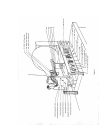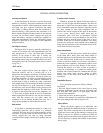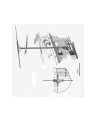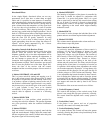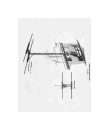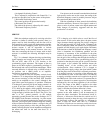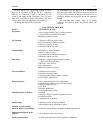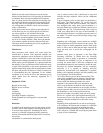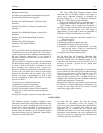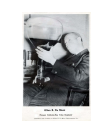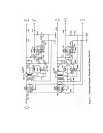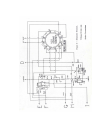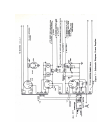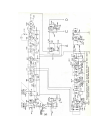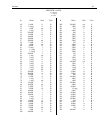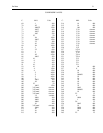
Du Mont 14
Equipment (Laboratory)
In addition to the equipment recommended for the field
group the following items are suggested.
Du Mont Type 202 Phasmajector Television Signal
Generator.
Du Mont Type 204A Low Frequency Square Wave
Generator.
Du Mont Type 204B High Frequency Square Wave
Generator.
Du Mont Type 207 Modulated High Frequency
Oscillator.
Du Mont Type 205 Oscillograph.
Laboratory Type Signal Generator.
Discussion
The Type 202 Television Signal Generator combined with
a small oscillator such as the Weston 787 will provide a
source of signals at all times, making work independent of
the local television transmissions. A test pattern is
therefore available at all times and for serious work it is
superior to pictures.
The Type 204A Low Frequency Square Wave Generator
has the following features. It provides an internal range
of from 3 cycles to 8 kilocycles continuous. It can be
driven externally over a range of from 3 cycles to 15
kilocycles. External synchronization is provided for and it
also has a 60 cycle square and a 1260 cycle sine output.
Impulses in connection with any square wave can be
secured. The output is approximately 15 peak to peak
volts at an impedance of 5000 ohms. Some of its many
uses are as follows:
1.Testing the causes of horizontal tear-out.
2.Adjustment of vertical sweep linearity.
3.Testing synchronizing circuits in general.
4.Testing low frequency response of video amplifier.
5.Testing AVC circuits for time constant and general
behavior.
6.Testing low frequency response of sweep output circuits
The Type 204B High Frequency Square Wave
Generator has the following features. Two ranges of
square waves generated internally or externally are
provided. Range No. 1. 7 to 50 kilocycles continuous.
Range No. 2. 50 to 500 kilocycles continuous.
Ranges can operate separately or simultaneously. A 1
to 10 megacycle continuous sine channel is provided.
Each channel can be synchronized externally or
internally or locked with the 204-A unit. Impulse waves
are available from any square wave. The output is
approximately 10 volts peak to peak at an impedance of
5,000 ohms. Some of its many uses are as follow:
1.Testing overall frequency and phase response of a
television receiver.
2.Testing ghost response.
3.Measuring resolution of cathode-ray tubes.
4.Adjustment of linearity of horizontal sweep.
5.Production of interlaced synchronization for testing
interlace and rasters. Useful for controlling the
Type 202 Television Signal Generator.
6.Testing synchronizing separator circuits.
The Du Mont Type 207 Frequency Modulated High
Frequency Oscillator will be announced at a later date.
Since the ordinary form of wobbulated signal is of no
value due to the wide band covered in television I.F. it is
necessary to provide a special unit for getting these
response curves.
The Du Mont Type 205 Oscillograph uses the intensifier
type of cathode-ray tube which gives the added brilliance
necessary for observation of fast television traces. The
vertical amplifier has a range of from 5 cycles to 1
megacycle with a sensitivity of .1 volt RMS per inch. It is
equipped with calibrated step and continuous attenuators
and the input impedance is 1 meg ohm.
Regarding the laboratory type standard signal generator
the selection is a matter of preference, and opinions vary
in extent to such a degree that we do not feel we should
specifically suggest types or makes.
CONCLUSION
The difference between completely equipped service
laboratories and television development laboratories must
of necessity be slight. Anything that will aid one will
likewise be of value to the other. It is believed that data
on the use or actual application of the instruments as
outlined under the laboratory group should be supplied
with the individual pieces of equipment. Therefore they
will not be covered in detail here.
We hope that this manual will help the average
serviceman to successfully service the majority of
receivers in spite of the limitations we have been forced to
place upon him. It is possible that within the year
equipment will be available that will remove these
limitations and enable us to write more complete service
instructions. In the meantime the service department will
be glad to receive any suggestions that servicemen feel
will add to the value of this manual.



